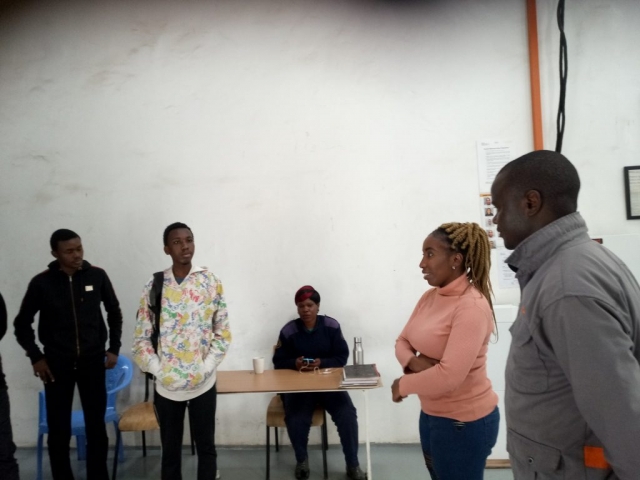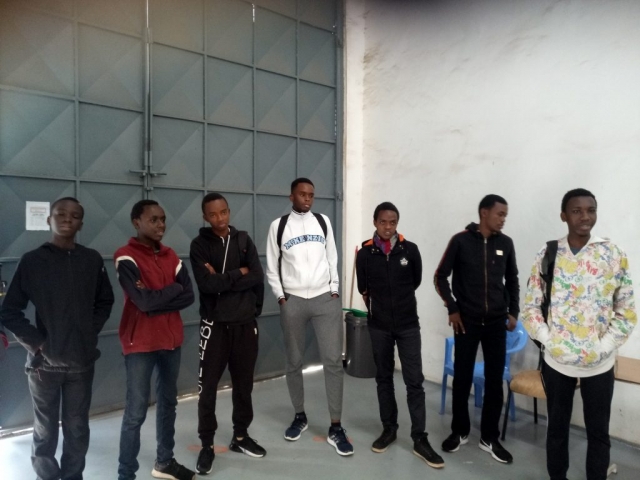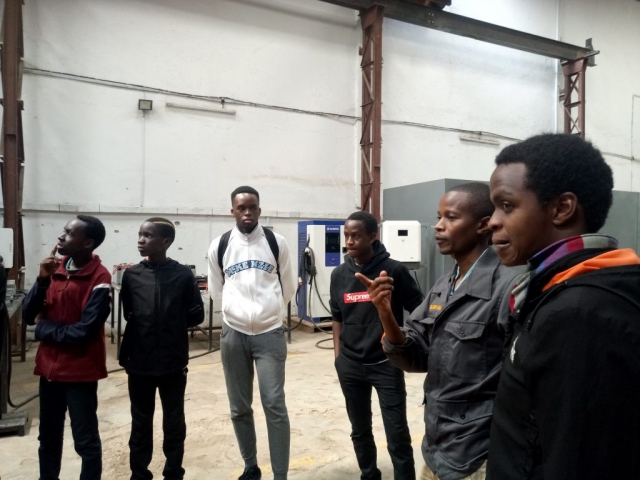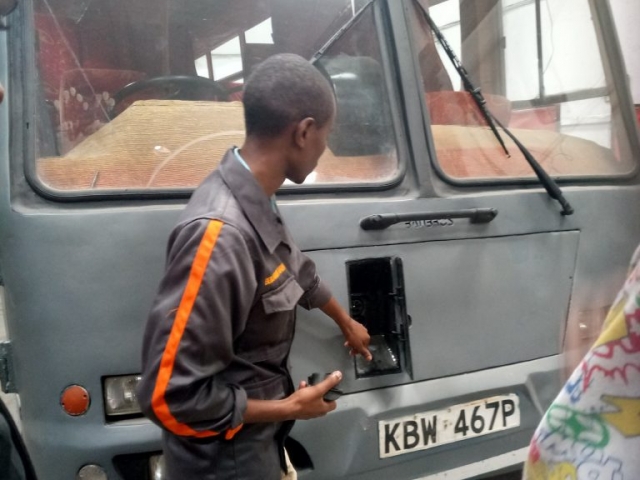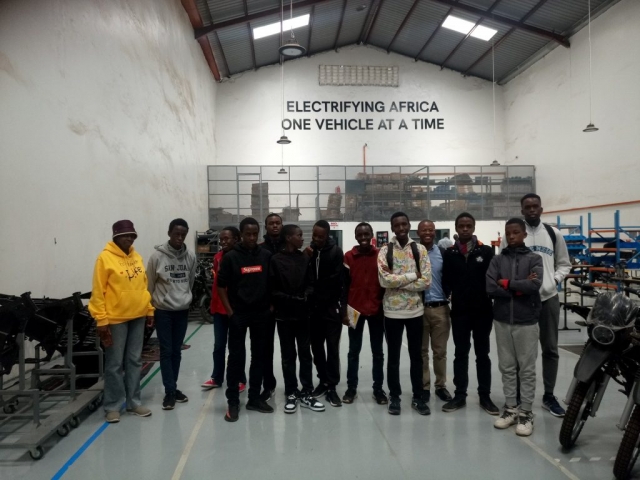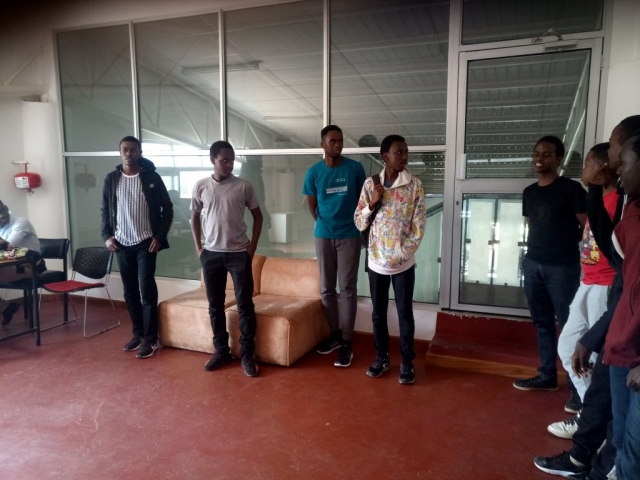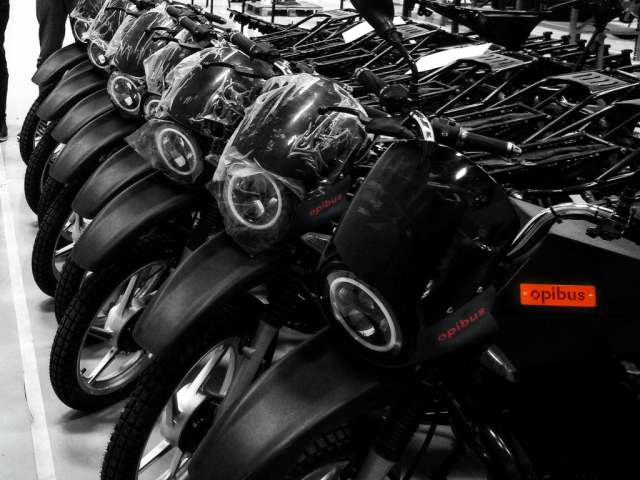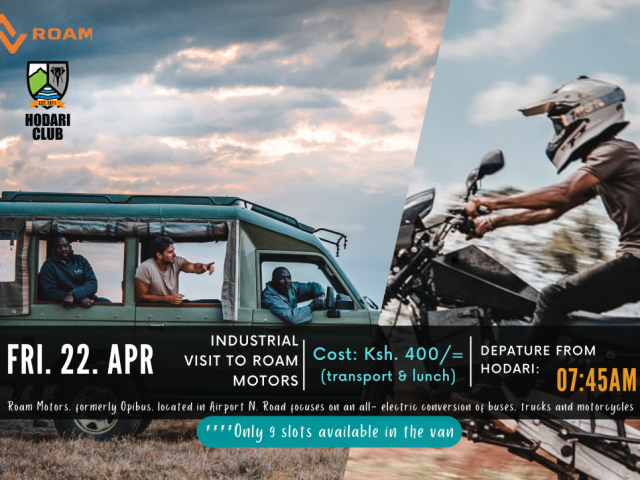22nd of April 2022, mark the date! On that very day, we visited Roam motors (formerly Opibus), a Kenyan-Swedish company founded in 2017 with the goal of making electric mobility more accessible to a broader market.
We, a team of 9 young men, some who have just sat for their Primary School exams and others who had just finished their Secondary School exams but all united with a passion for learning and anything that is moved by a motor, departed from Hodari a few minutes past 8:00a.m. The sky was pouring and the streets were, thankfully, not clogged up by the morning traffic. And after a rather quiet and uneventful journey, we arrived at our destination just off Airport Road in the Industrial Area region just a few minutes past 9am where Evaline, was waiting for us. Actually, we thought we were quite lost in between trucks and warehouses until one of the men who had just gotten off a truck pointed casually to our destination saying, here it is.
Evaline, the Sales Administrator of Roam Motors was our guide for the day. She showed us to the first go-down where the assembly of Roam electric motorcycles takes place. Here, dozens of rows of electric motorcycles, assembled to different degrees parked. The assembly line, however, was empty, save for a few miscellaneous parts.
After giving a basic overview on the company, she introduced us to Hilary, an engineer at Roam motors who would further explain the more technical details of the electric motorcycle. The motorcycle on display was an Opibus E model. (PS. One of the boys actually asked why it did not have a simple name like Susanna). It boasted an impressive 80km range, 8.65kW and 185Nm of torque, delivered instantly through a single motor. This could propel the motorcycle from 0-120km/h in a neck-snapping 5 seconds in near complete silence.
The power is evolved by a 2.7kWh battery which can be completely charged from empty in 4 hours using a 240V AC charger which can be plugged directly into a standard home socket. This uses only around 2 units of power.
The motorcycle’s 80 kilometer range is displayed on its digital gauge which also displays its speed, warning lights and driving modes, of which the motorcycle has four.
The first allows slow navigation and is electronically limited to 10km/h. The second allows you to ride at a top speed of 30km/h. The third lets you access the motorcycle’s electronically limited top speed of 120km/h. The fourth is reverse and capped at 10km/h for safety.
To boost range, the motorcycle’s motor also doubles as a generator during coasting to replenish the battery to a small degree. It also uses efficient LED lights which consume less power than traditional halogen lights.
The motorcycle is priced at around Ksh. 160,000 which was quite a reasonable price. Evans also mentioned that the government issued a requirement for the motorcycle assembly plants in Kenya to manufacture some of their components in Kenya, like the aluminum handle, the foot rests etc.
After a demonstration of the motorcycle’s silent ride (which featured a reverse gear of up to 10kph) by engineer Evans and innumerable questions about the viability of the bike in muddy areas, whether the bikes use regenerative breaking, how to recharge more efficiently when riding downhill etc. After the final note about the much hyped Opibus Air which will have a replacement battery as well as the current battery, we moved to another go-down where Roam were working on their electric bus. Unfortunately, there were no 4x4s available that day.
Evaline introduced us to Benjamin, a fairly young man who seemed to be on high demand right there within the go-down. In fact we were thanked for coming early since a group that arrived later would not have had the chance to see the bus. Benjamin showed us around the bus and gave us all the details concerning its power-train.
The bus is a converted 51-seater model with its engine and drive-train replaced by 30 battery modules, each with 12 cells and a two speed gearbox. These are all located as close to the ground as possible without affecting the centre of gravity since these new components replaced the original 450kg engine and gearbox. The 128kWh battery in the bus produces about 225kW and 706Nm of peak torque for the first 10 seconds. This power is delivered by a central motor to the wheels through the transmission whose first gear has a ratio of about 4.7:1 and a rear differential. The second gear has a ratio of 1.4:1.
The bus has up to 160km of range and an electronically limited top speed of 85km/h. The bus could charge through either a slower 19.8kW AC charger or a 90kW DC charger which can charge the bus’s massive batteries in about an hour.
From the short demonstration drive, we can confirm that the bus also drives silently and smoothly, its electric power-train overcoming the age old problem of the incessant rattling of ICE buses.
After the demonstration, Michael gave our guides some gifts as a token of appreciation. We then took a group photo and left for an early lunch at Strathmore University and an extra dose of fun as we visited some friends at the Digital Learning Centre.
The trip was informative, insightful and enjoyable, giving us a peek at a bright environmentally friendly electric future for Kenya.
Article By: Michael Magu

